Food
“The Film-Flam Man” Episode of MULLIGAN STEW
Explanation here.IMDB entry for the episode here.
Posted By: Paul - Fri Mar 01, 2024 -
Comments (0)
Category: Food, Junk Food, Sleaze and Sleazeballs, Television, 1970s
Food from Petroleum
In recent years there's been lots of talk about finding new sources of food (insects, lab-grown meat, etc.) to feed the world. But back in the 1960s researcher Alfred Champagnat had already invented what he thought would be the food of the future: protein from petroleum.
Newsweek - Feb 27, 1967

Scientific American - Oct 1965
Champagnat's idea seems to have fallen by the wayside. There's a fairly recent article in Mold magazine that discusses his invention. It simply notes that the food industry had other priorities:
Wikipedia has some more info which suggests that the protein obtained from petroleum wasn't entirely safe to eat:
The Soviets were particularly enthusiastic, opening large "BVK" (belkovo-vitaminny kontsentrat, i.e., "protein-vitamin concentrate") plants next to their oil refineries in Kstovo (1973) and Kirishi (1974). The Soviet Ministry of Microbiological Industry had eight plants of this kind by 1989. However, due to concerns of toxicity of alkanes in SCP [single-cell proteins] and pressured by the environmentalist movements, the government decided to close them down, or convert to some other microbiological processes.
Posted By: Alex - Sun Feb 25, 2024 -
Comments (2)
Category: Food, 1960s
Stan Freberg’s Chun King Commercials
Well-known for his comedy and innovative commercials, Stan Freberg outdid himself for the Chun King campaign.If you go to YouTube, you can see a classic hour of comedy that Freberg did with Chun King as the sponsor.
Posted By: Paul - Sat Feb 24, 2024 -
Comments (1)
Category: Food, Humor, Television, Advertising, 1960s
Miss Frozen Rabbit Meat
In the 1950s there was a brief effort to make rabbit meat a more mainstream part of the American diet. In 1957, this led to the crowning of "Miss Frozen Rabbit Meat," whose job it was to convince housewives to buy more frozen rabbit meat.I know it's possible to get rabbit meat in specialty butcher shops and markets here in the U.S., but I've never seen it in an American supermarket. So the effort to make it more mainstream evidently fizzled.
More info: Lola Mason's imdb page
Related Post: Recipes for Cooking Domestic Rabbit Meat

Daily Telegraph - Oct 26, 1957

Longview Daily News - Mar 31, 1958
Below, part of the marketing campaign to get Americans to eat more rabbit.

Baltimore Evening Sun - July 18, 1957
Posted By: Alex - Sat Feb 17, 2024 -
Comments (10)
Category: Awards, Prizes, Competitions and Contests, Food, 1950s
Self-Combusting Pistachios
The German Transport Information Service warns about the possibility of pistachios self-combusting:Fat decomposition may proceed as follows:
by hydrolytic/enzymatic fat cleavage or
by oxidative fat cleavage
Hydrolytic/enzymatic fat cleavage:
If the critical water content of the pistachio nuts is exceeded, this promotes hydrolytic/enzymatic fat cleavage. Fat-cleaving enzymes are activated by the elevated water content. The additional action of light and heat may accelerate this process. Free fatty acids sometimes have an unpleasant odor and taste. In the event of extended storage or improper cargo care, these cause the cargo to become rancid.
The free fatty acids formed are consumed by respiration processes in the pistachio nuts to form carbon dioxide and water, a process which is associated with considerable evolution of heat.
Self-heating of pistachio nuts is an extremely vigorous process, as the consumption of fatty acids by respiration processes is associated with a considerably greater evolution of heat than is the case with the respiration equation for carbohydrates. Here too, as with cereals, the spoilage process proceeds in a type of chain reaction, because heat and water are formed by the fatty acids consumed by respiration, which in turn contribute to an intensification of the process.
This shouldn't be a problem for any pistachios you've got at home, unless you're storing A LOT of them.
via Dave Barry
Posted By: Alex - Tue Feb 13, 2024 -
Comments (0)
Category: Food, Firefighting, Arson, Wildfires, Infernos and Other Conflagrations
Miss Futuristic Canned Foods
What would futuristic canned foods look like? And at what point in the future will we get this stuff?Putting those questions aside, what I find really odd about the clipping below is that it gives the Social Security Number of Miss Futuristic Canned Foods.
At first I thought the number must be a joke (though I didn't understand the joke), but according to the Social Security Death Index that number belonged to a woman named Janet Lee, who was born in 1935 and died in 2008. The dates are about right. Jan would be short for Janet. And Lee would be her married name. So that must really have been the SSN of Miss Futuristic Canned Foods.
The numbers indicate that the card was issued to her in Indiana sometime between 1936 and 1950.

Charlotte News - Mar 5, 1957
Posted By: Alex - Sat Dec 16, 2023 -
Comments (1)
Category: Awards, Prizes, Competitions and Contests, Food, 1950s
Follies of the Madmen #583
In 1969, everything had to relate to drugs.Source.

Posted By: Paul - Tue Dec 05, 2023 -
Comments (0)
Category: Drugs, Food, Advertising, 1960s
Gladys Sellew’s 15-cents-a-day diet
Back in the 1930s, sociologist Gladys Sellew decided to find out if it was possible to survive spending only 15 cents a day on food. I think, in today's money, that would be about $3/day.She used herself as a test subject and, five years later, reported that not only was it possible, but she actually only spent an average of 13 cents a day on food.
She said she was going to remain on her frugal diet for the rest of her life.

Austin American Statesman - June 3, 1942
The headline below claimed that she gained weight on her diet, but in the picture above it sure doesn't look like she had any extra weight on her.

Hartford Courant - Feb 24, 1941
A typical day's meal plan:

Austin American Statesman - June 3, 1942
By way of comparison, here's a more recent version of an experiment in frugality: "Spending $5 a day on food. Is it possible?"
Posted By: Alex - Mon Dec 04, 2023 -
Comments (0)
Category: Food, 1940s, Dieting and Weight Loss
She sold her body for gingerbread
Requesting "all the ginger-bread she could eat" in exchange for her body after death initially struck me as a bizarre detail. But the more I think about it, the more reasonable it seems given that condemned prisoners often request cookies, candy, junk food, etc. as their last meal.
Whiting Weekly News - Jan 25, 1890
Posted By: Alex - Sat Nov 18, 2023 -
Comments (1)
Category: Death, Food, Prisons, Experiments, Nineteenth Century
The Acme Barbecue College
Once upon a time, in Alhambra, CA, you could go to school just for BBQ. One presumes that this is where Wile E. Coyote learned how to cook a Road Runner--if one such could ever be caught!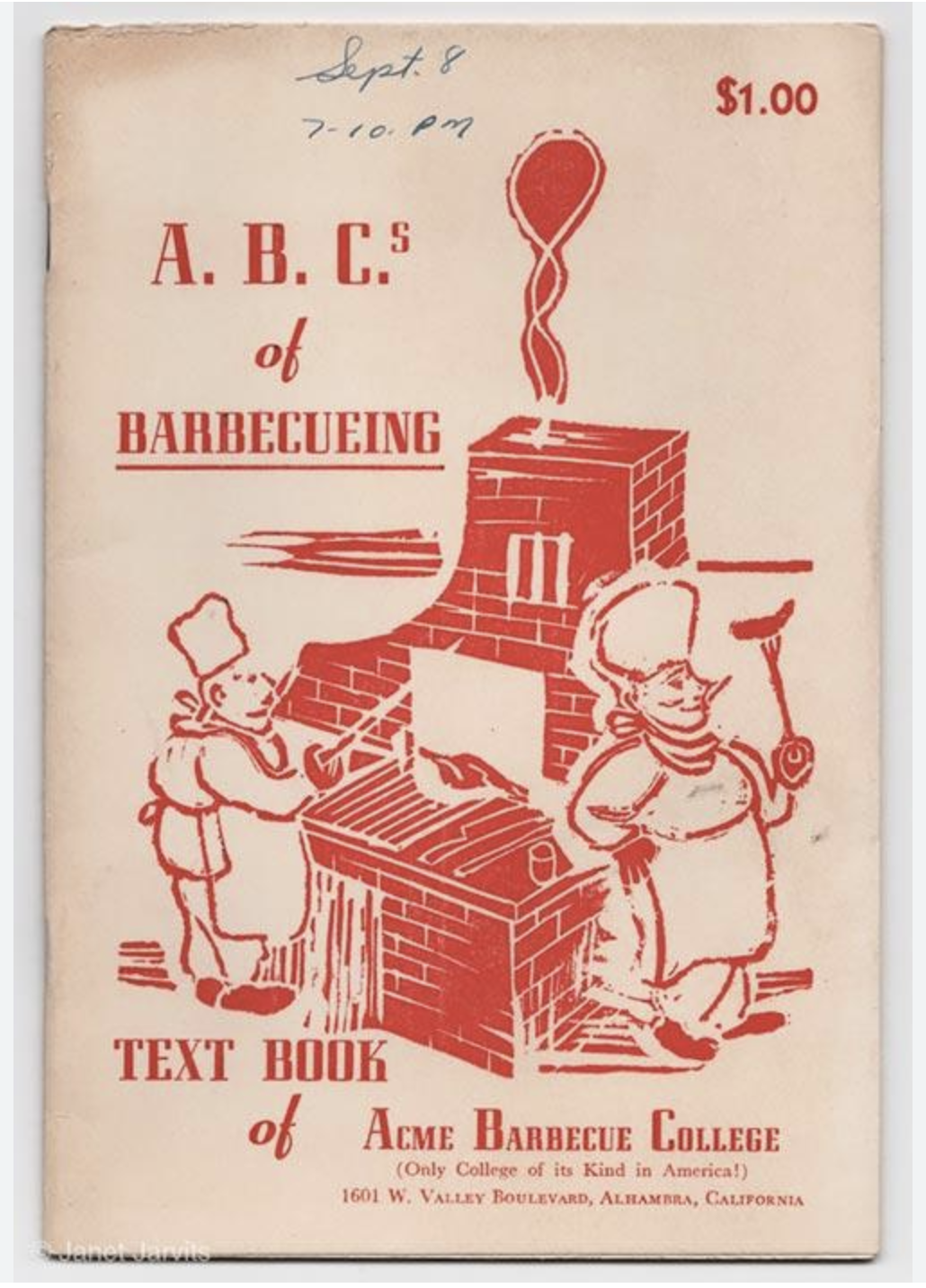
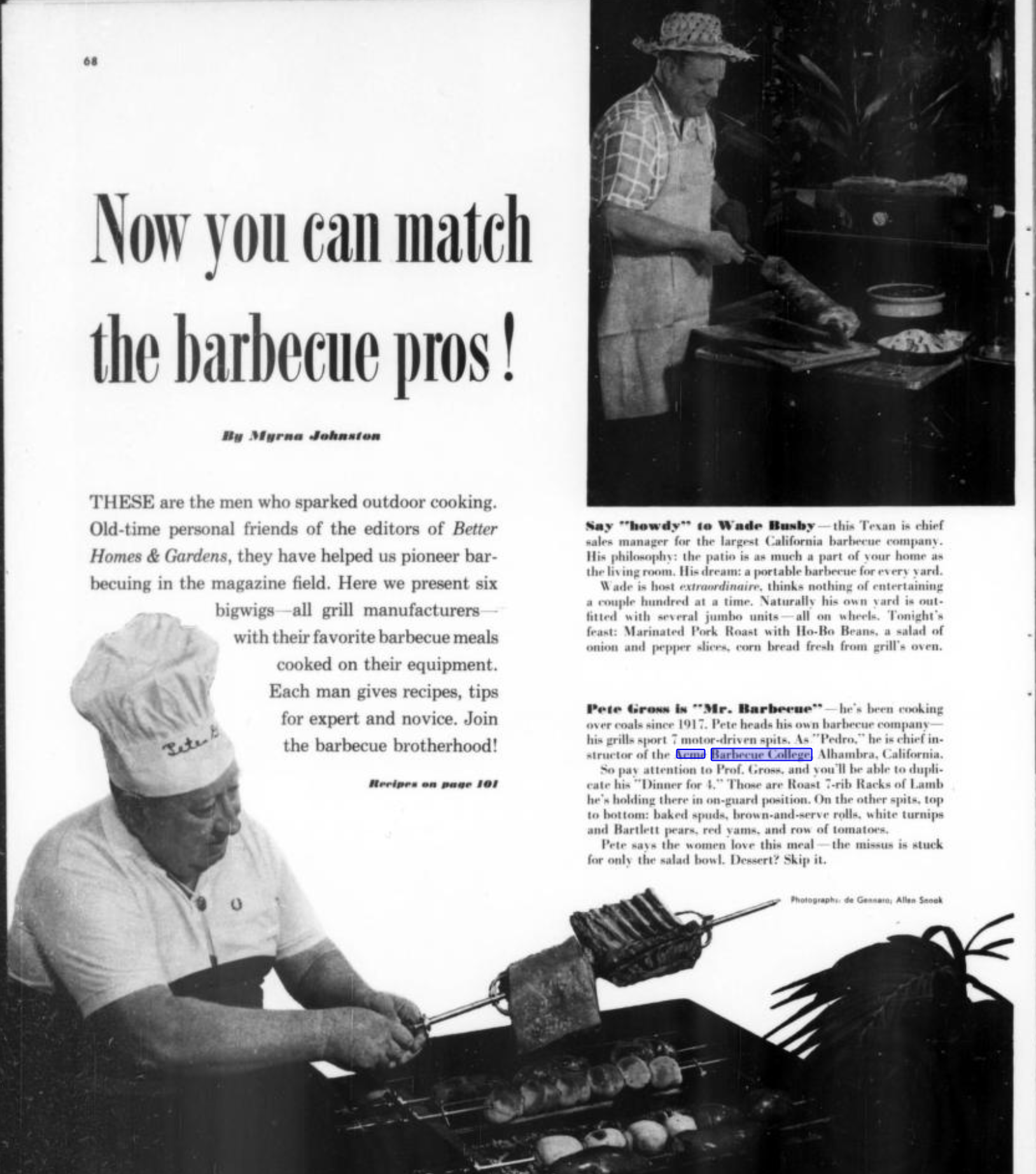
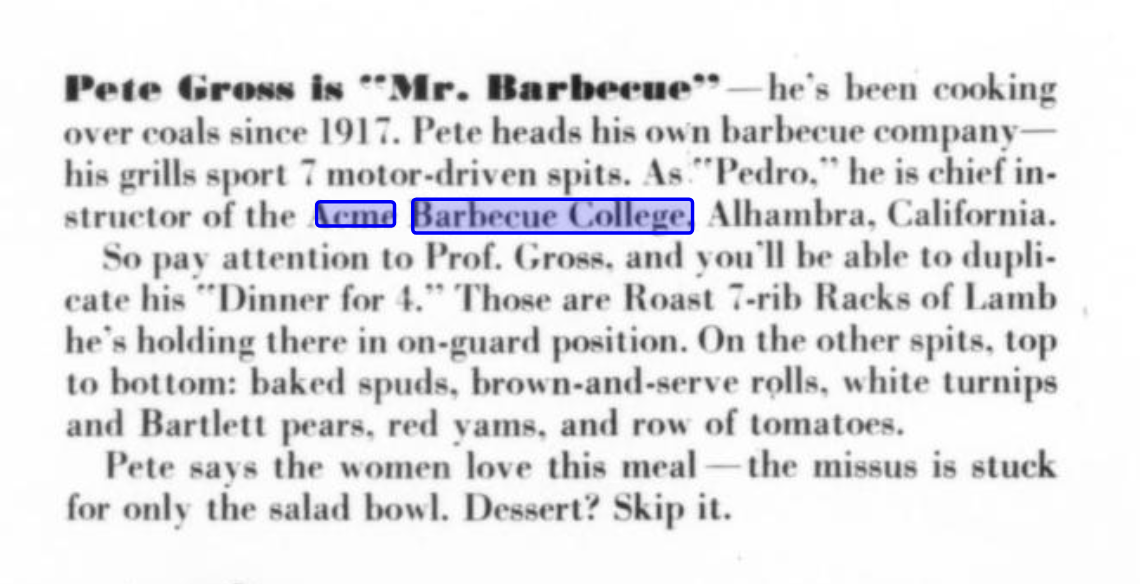
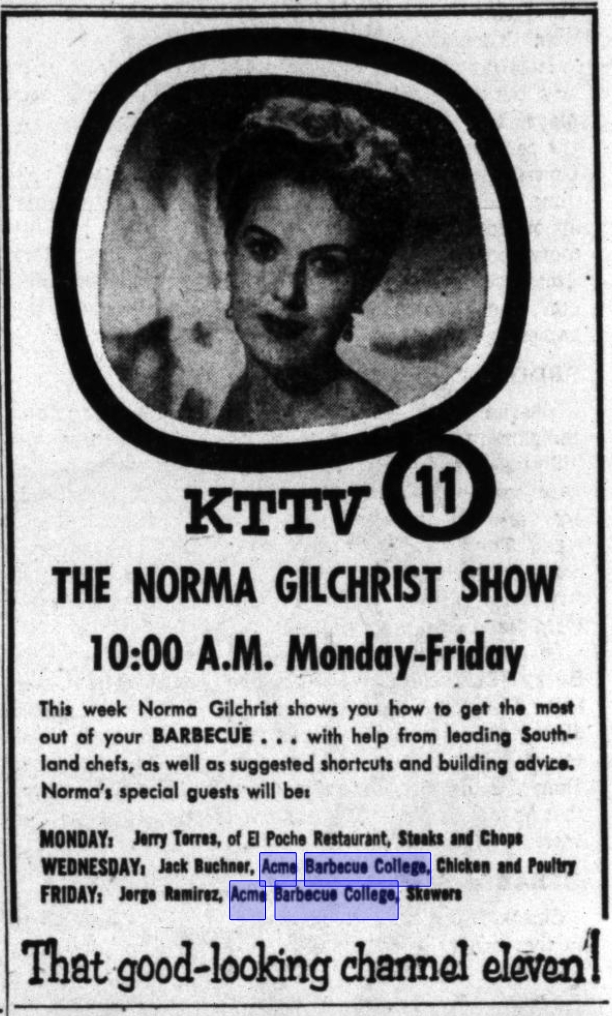
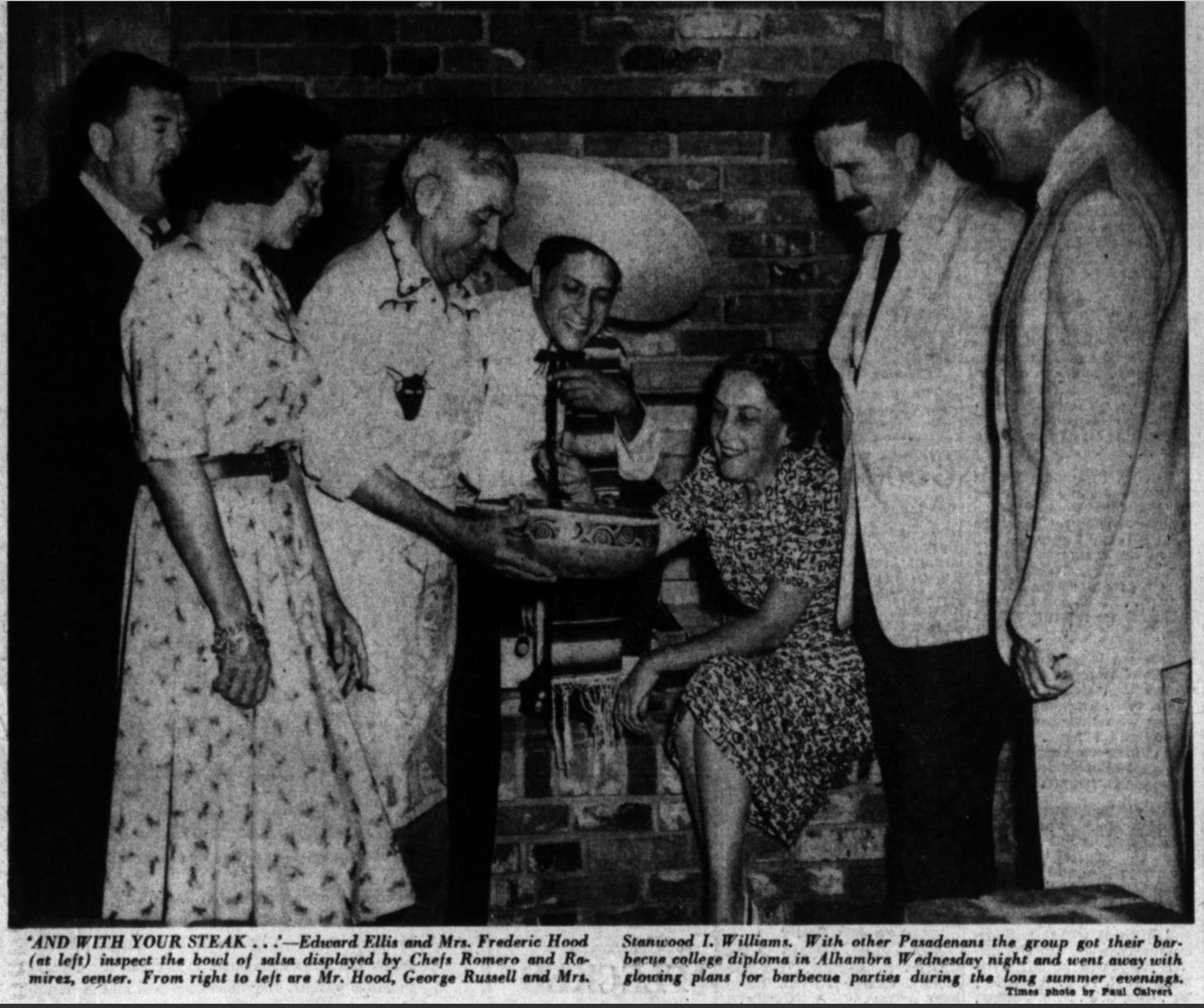
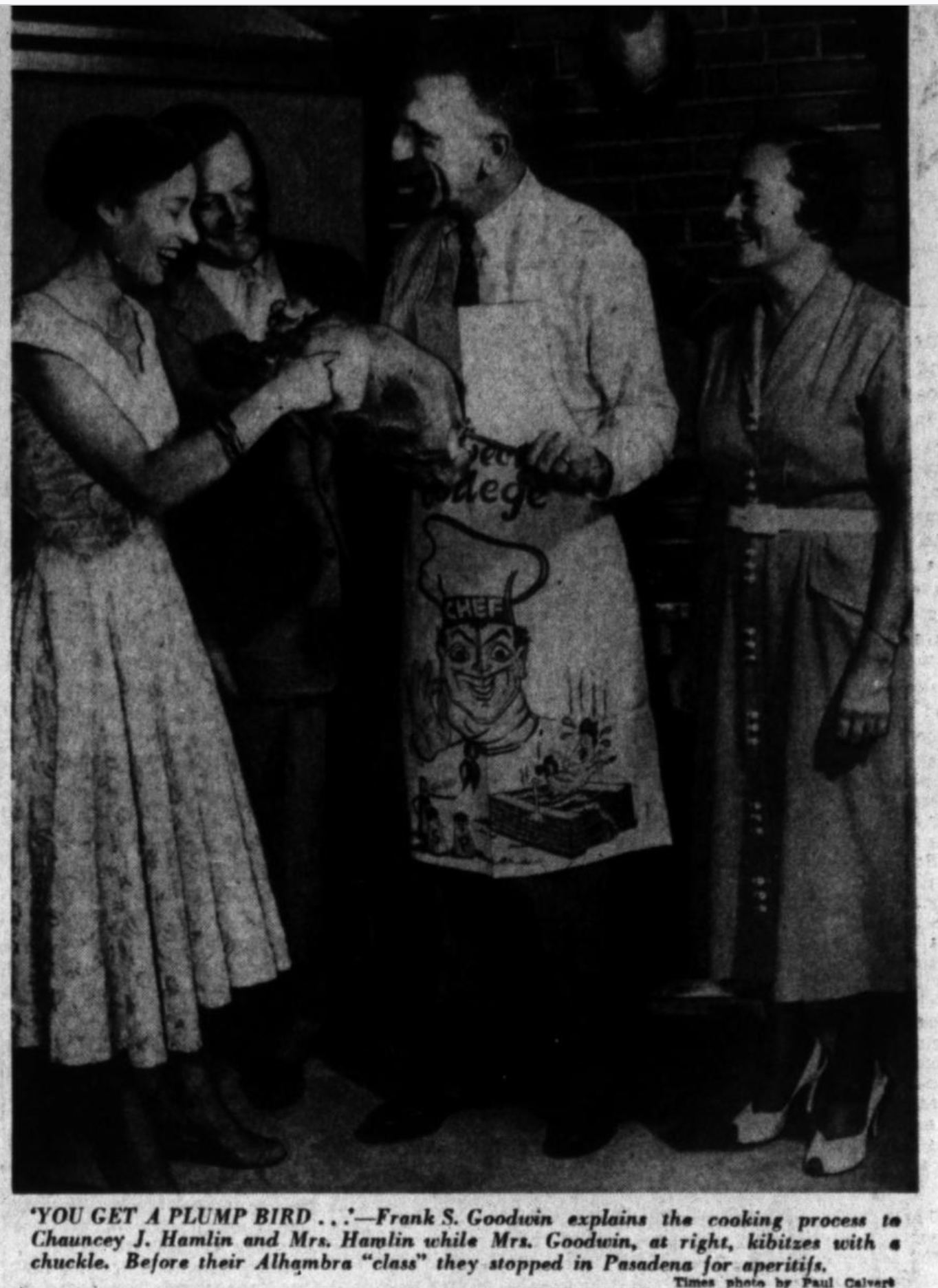
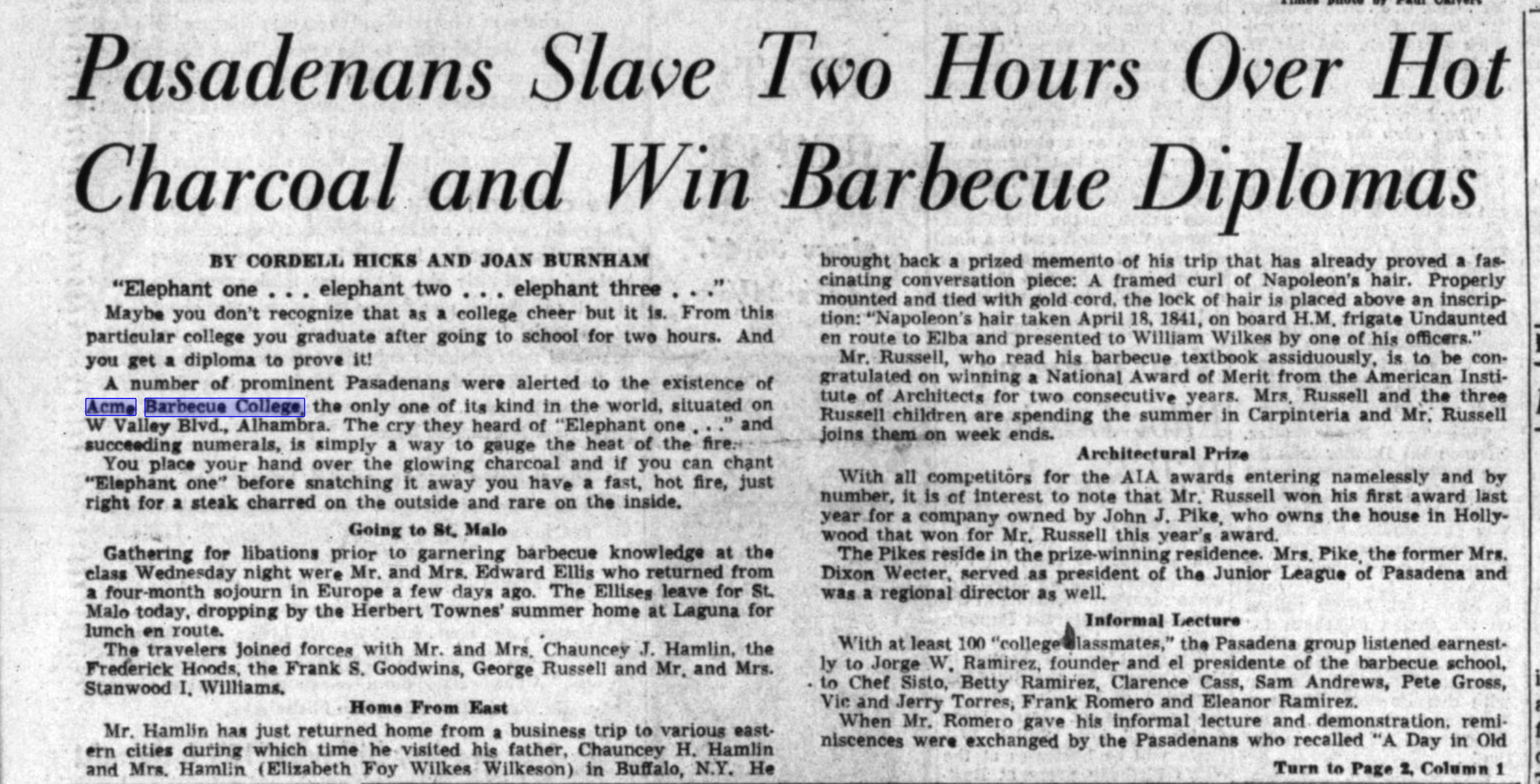
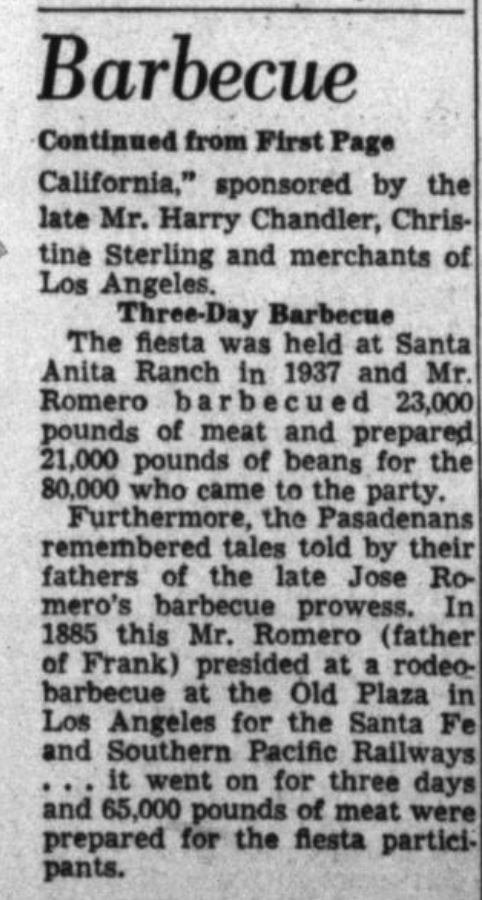
Posted By: Paul - Wed Nov 01, 2023 -
Comments (8)
Category: Education, Food, Regionalism, 1950s

| Who We Are |
|---|
| Alex Boese Alex is the creator and curator of the Museum of Hoaxes. He's also the author of various weird, non-fiction, science-themed books such as Elephants on Acid and Psychedelic Apes. Paul Di Filippo Paul has been paid to put weird ideas into fictional form for over thirty years, in his career as a noted science fiction writer. He has recently begun blogging on many curious topics with three fellow writers at The Inferior 4+1. Contact Us |




